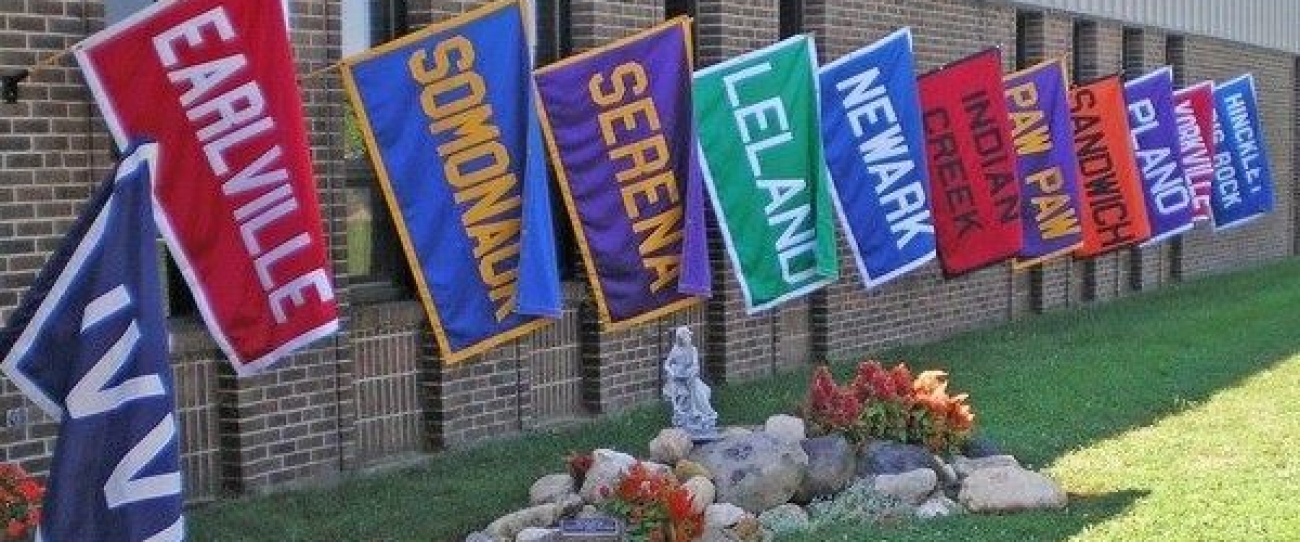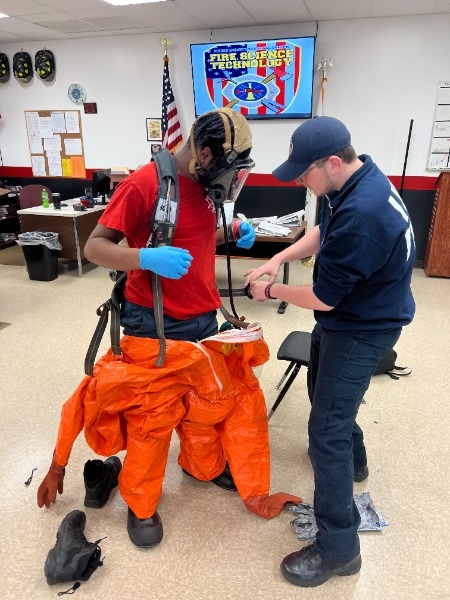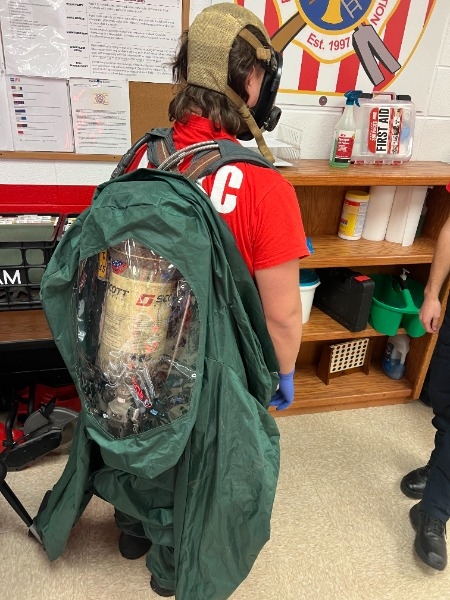Fire Science Students Experience Multitude of Hands-On Activities
Since returning from winter break, we have been working on resumes, interviews, HAZMAT, roof operations, and search and rescue.
We spent two days working with EMS learning how to write our resumes. Resumes had to be turned in and graded in preparation for our interviews. On our first day of interviews, we conducted one-on-one interviews with industry professionals. On our second day of interviews we conducted panel interviews, three industry professionals interviewed three students at a time. This is an interview process that has been used in the fire service for both initial hire and promotional exams.
For Hazardous Materials (HAZMAT), we learned how to put on Level A suits, which is a fully encapsulating suit and provides us the most protection possible during a hazardous materials incident. We talked about how to decontaminate an individual before they exit the level A suit. We talked about and completed hands-on practicals for different techniques of detecting, diluting, and mitigating hazardous materials. The students learned how to use the emergency resource guide to identify chemicals and the health hazards associated with it.
During roof operations, students learned about our different types of saws including our gas-powered chainsaw, K12, battery powered chainsaw and battery powered K12. We learned different types of ventilation cuts including the 798, trench, louver and Milwaukee cut. We discussed different types of roofs and how to walk on pitched roofs. We learned the proper technique for swinging an ax while in our gear and on air.
For search and rescue, they completed several mazes while our masks were blacked out to simulate a zero-visibility environment. During the maze, the students had to locate different pieces of an SCBA pack and reassemble it while following a hoseline. The students also completed a lost company drill. In this drill the students are again blacked out and are intentionally separated from each other. They are then instructed to start, and must use their senses to locate their entire crew.
In the near future, we are going to start to work on vehicle extrication and other fire scenarios.



 Launch the media gallery 1 player - media #1
Launch the media gallery 1 player - media #1 Launch the media gallery 1 player - media #2
Launch the media gallery 1 player - media #2